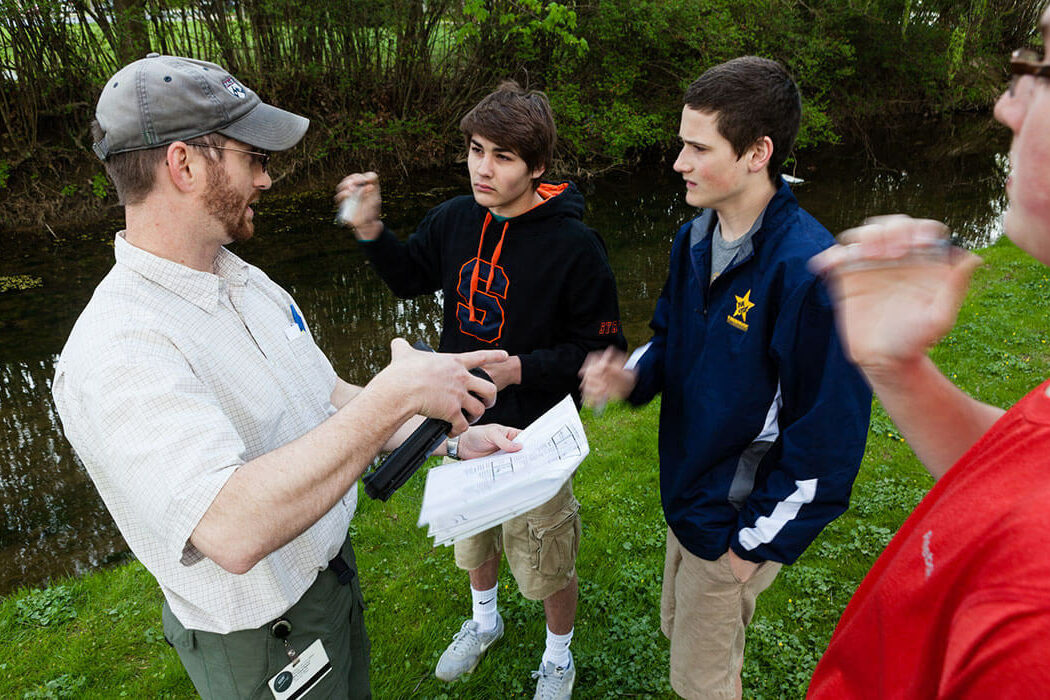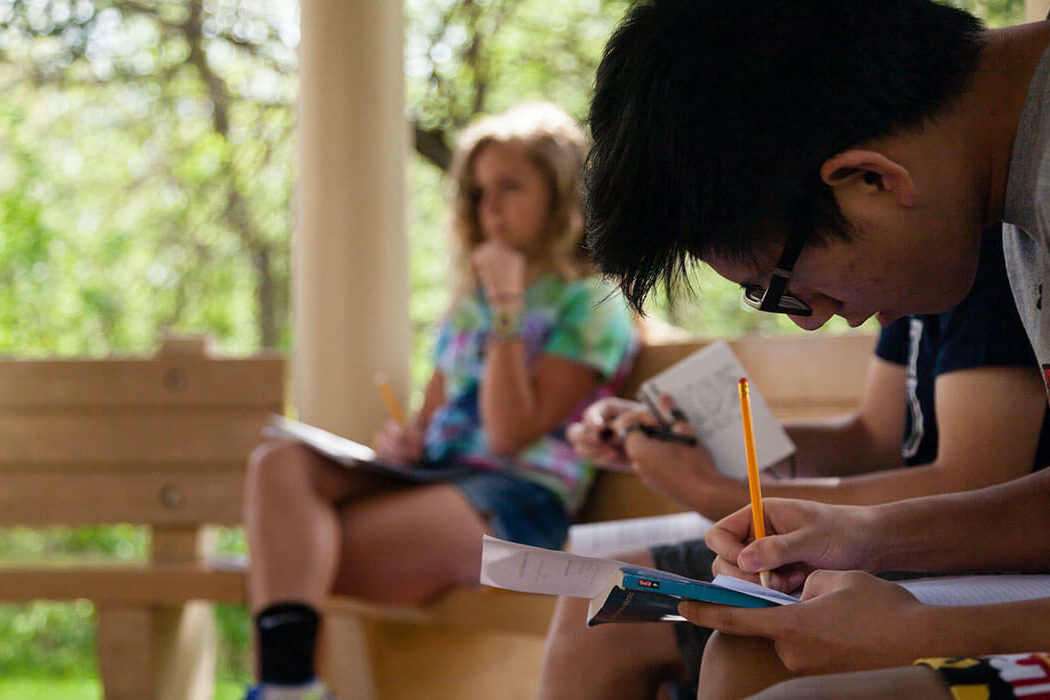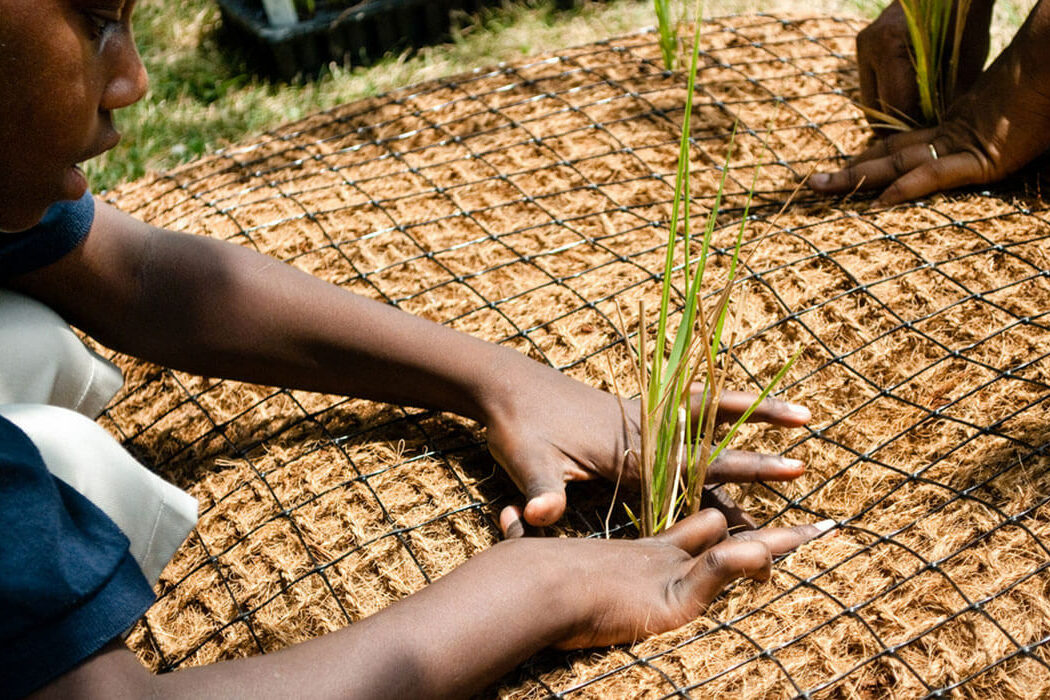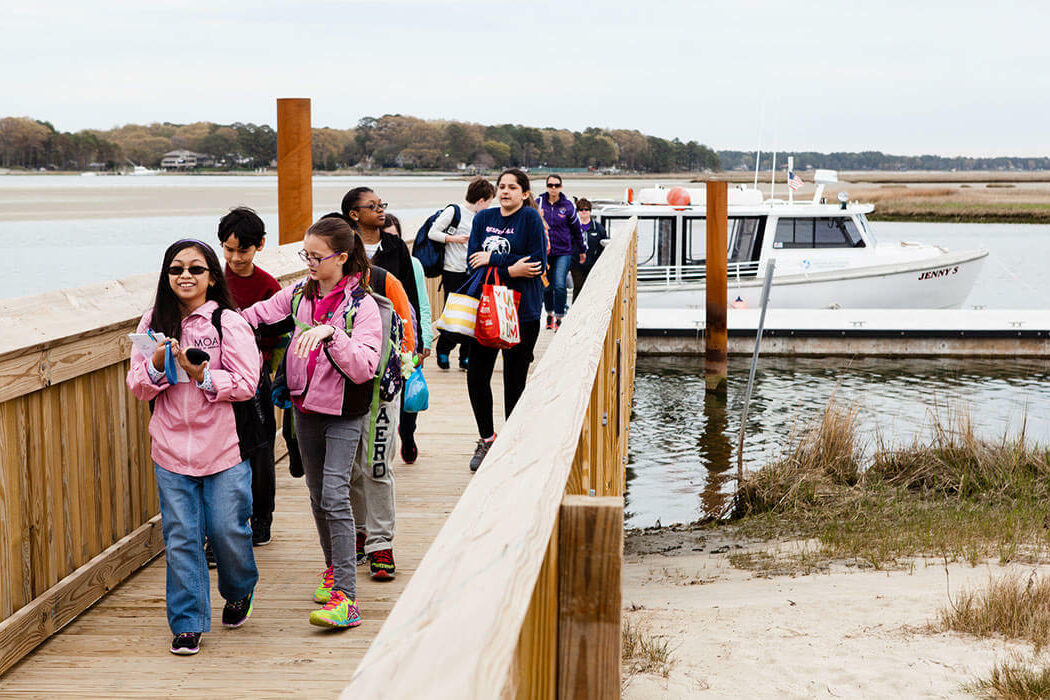What is a MWEE?
The Meaningful Watershed Educational Experience (MWEE) is a learner-centered framework that focuses on investigations into local environmental issues and leads to informed action. Teachers play an important role in providing structure, support, and encouragement as students use their curiosity and creativity to investigate and take action to address a local environmental issue. MWEEs are made up of multiple components that include learning both outdoors and in the classroom and are designed to increase environmental literacy by actively engaging students in building knowledge and meaning through hands-on, student-centered learning experiences. The MWEE Guide is available for download in both English and Spanish.
“The MWEE is a learner-centered, inquiry and action framework that provides educators a roadmap for teaching content in a more engaging way. This type of hands-on learning helps students to understand their impact and realize their personal power to make changes in their local community, which in turn has the potential to affect all habitats and species living downstream.”
- Tamara E. Peffer, Environment & Ecology Content Advisor, Pennsylvania Department of Education
Essential Elements
The MWEE consists of four essential elements that describe “what students do.” These elements, together with the supporting practices, create a learner-centered framework that emphasizes the role of the student in actively constructing meaning from the learning experiences. Throughout the process students have time for reflection, allowing them to refocus on how what they are learning and experiencing affects the driving question. The essential elements are not meant to be linear. In fact, some elements, such as Synthesis and Conclusions, occur repeatedly throughout the MWEE.
Issue Definition
Students focus on a driving question, which is defined by the teacher, that addresses a locally relevant environmental issue that sparks curiosity and organizes student inquiry and investigations. To support youth voice and deepen the learning, students are actively involved in co-developing supporting questions with teachers to better understand the driving question and issue. Students learn more about the issue by making observations, finding and reading credible sources, talking to experts, and carrying out field investigations. Students also consider environmental policies and community practices and reflect on personal, stakeholder, and societal values and perspectives to develop a comprehensive picture of the root causes of the environmental issue.
Outdoor Field Experiences
Students participate in multiple Outdoor Field Experiences to explore the driving question and strengthen their connection to the natural world. During outdoor investigations students can use their senses, scientific equipment, and technology to make observations, collect data or measurements, and conduct experiments necessary to answer their supporting questions and inform environmental action. Within appropriate safety guidelines, students are actively involved in planning and conducting the field investigations. These experiences can take place on the school grounds, close to the school or at off-site locations.
Synthesis and Conclusions
During Synthesis and Conclusions, students reflect on each experience and investigation in relation to the issue, and share their claims and conclusions with each other. Teachers should plan for this to occur regularly throughout the MWEE. This learning and frequent reflection provides the foundation for the development of claims and environmental action that address the driving question and connect to the environmental issue.
Environmental Action Projects
As a result of their investigations, students identify solutions and develop Environmental Action Projects that directly address the issue within their school, neighborhood, or community. Students are actively engaged in and, to the extent possible, drive the decision-making, planning, and implementation of the action project. Teachers facilitate this process by forming groups, moderating, and answering questions. Students reflect on the value of the action and determine the extent to which it successfully addressed the issue.
Supporting Practices
The MWEE also includes four supporting practices that describe “what teachers do,” along with their partners, to ensure success.
Teacher Facilitation
MWEEs depend on teacher facilitation and ongoing support of student learning. Teachers balance roles of facilitation, direct instruction, and coaching to create a student-centered learning experience where the essential elements of the MWEE come together to support goals for learning and create opportunities for students to take active roles in the learning process.

Learning Integration
MWEEs are anchored to curriculum standards and support formal goals for learning and student achievement. They provide authentic, engaging opportunities for interdisciplinary learning that crosses traditional boundaries between disciplines. Some portions of the experience, such as the outdoor field experiences, may occur off school grounds and/or be facilitated in partnership with external providers, however, the MWEE is integrated into the scope and sequence of the academic program.
Local Context
MWEEs have teachers use the local environment and community as a context for learning that is relevant to students’ lives. Situating the MWEE within local contexts promotes learning that is rooted in the unique culture, history, environment, economy, literature, and art of a students’ school, neighborhood, or community. This also enables students and teachers to explore how their individual and collective decisions affect their immediate surroundings and in turn affect larger ecosystems and watersheds.

Sustained Experience
MWEEs represent sustained activity that engages students from beginning to end. Though a field experience may occur on one day, the total duration leading up to and following the experience involves a variety of rich learning opportunities spread over the course of a unit or multiple units. Experiences such as tours, gallery visits, simulations, demonstrations, or nature walks may be instructionally useful, but alone do not constitute a MWEE.
